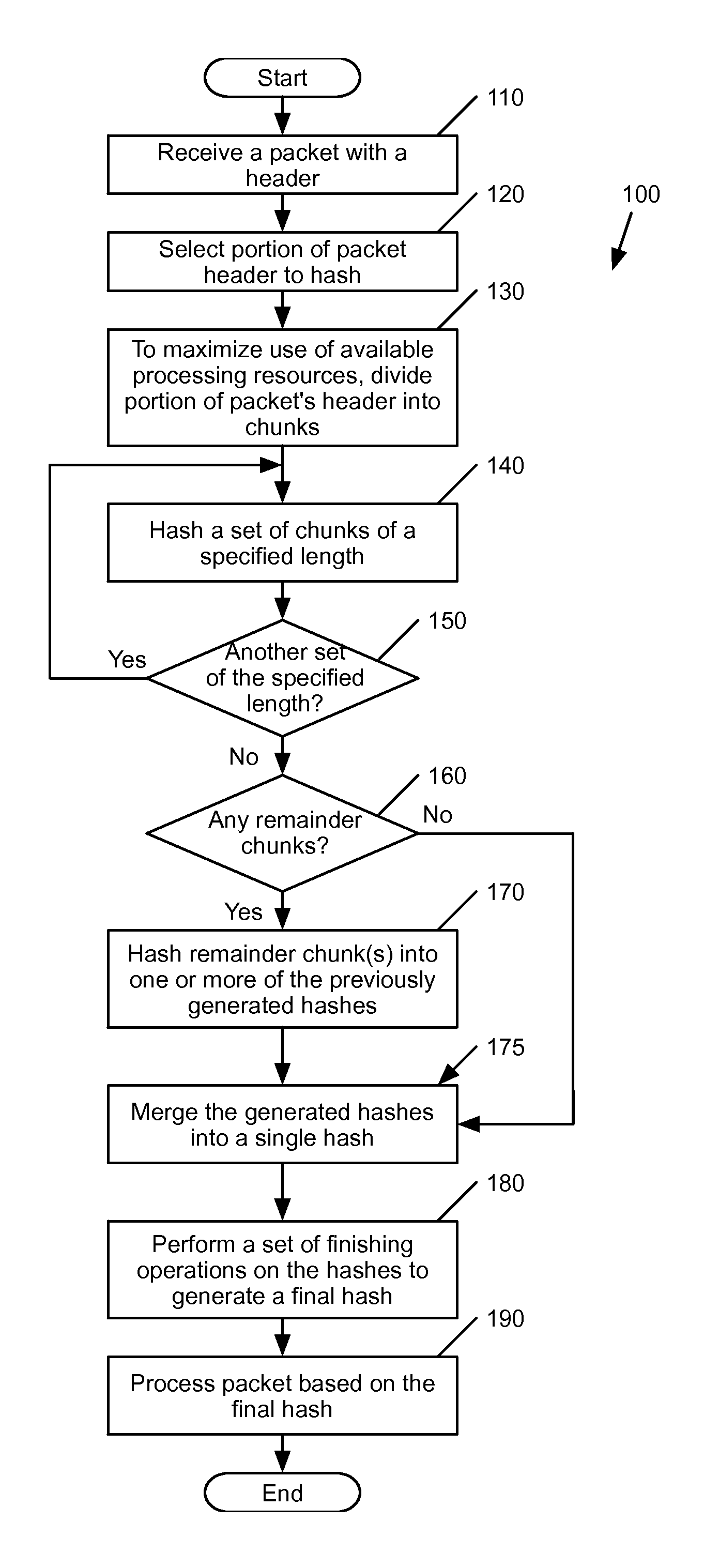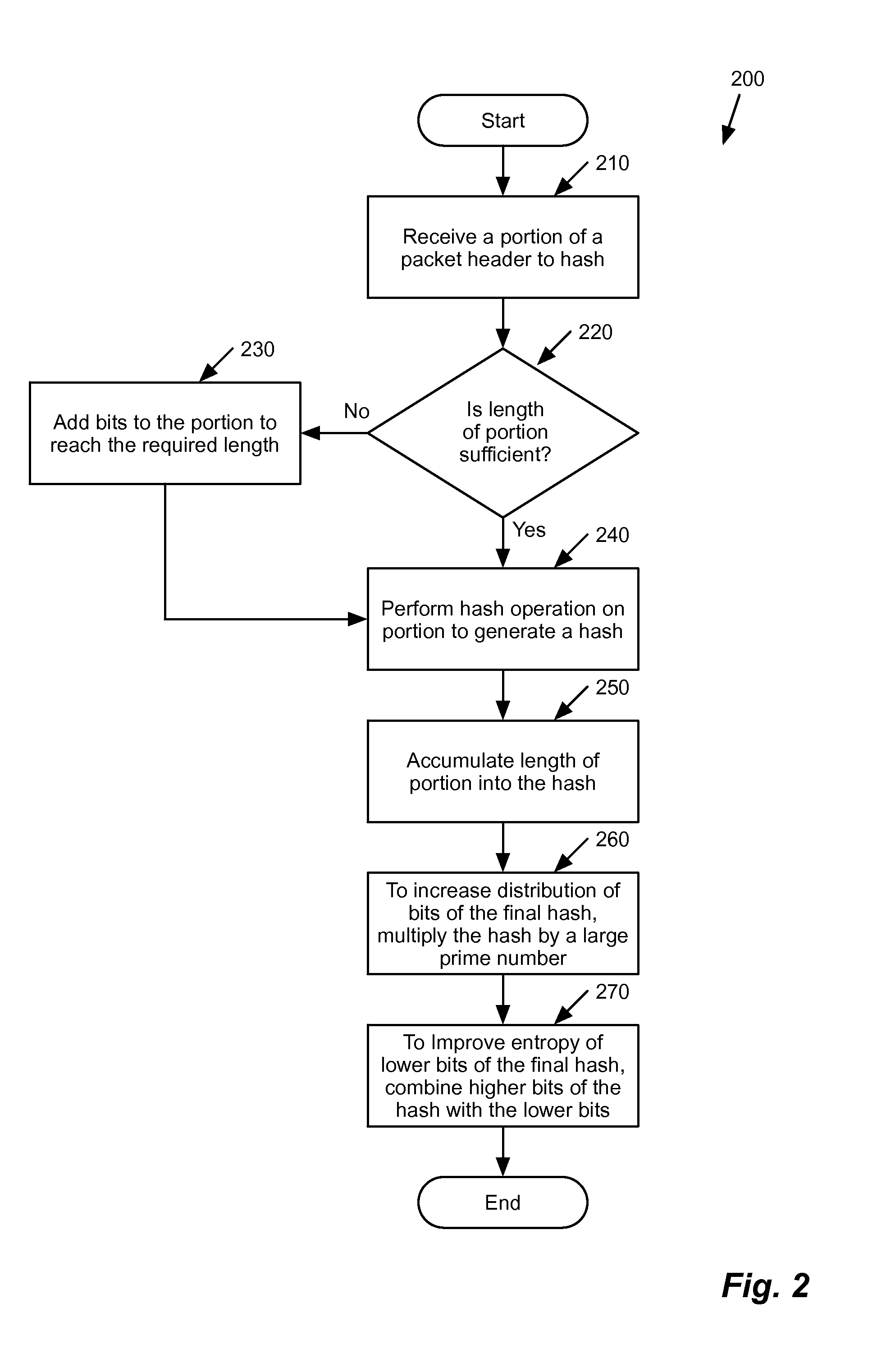Hashing techniques for use in a network environment
a network environment and entropy technology, applied in the field of entropy hashes for network environments, can solve the problem of not producing high quality hashes from short hash inputs, and achieve the effect of quick production of highly entropic hashes
- Summary
- Abstract
- Description
- Claims
- Application Information
AI Technical Summary
Benefits of technology
Problems solved by technology
Method used
Image
Examples
example use cases
III. Example Use Cases
[0112]Having discussed example hashing techniques, several example uses of these techniques will be now be described by reference to FIGS. 13 and 14. In these examples, the hashing is used to facilitate flow table lookup and perform a multipath routing strategy. One of ordinary skill in the art would understand that following examples are just two example use cases, and there can be multiple other use cases. In addition, although many of the examples described herein shows a physical forwarding element, the hashing can be performed by any component or appliance that require quality hashes for different purposes. As an example, the hashing can be performed by a network load balancer appliance that balances traffic for different server clusters. Alternatively, the hashing may be used for data partitioning in distributed storage services. The hashing may be used for firewalling, per-flow statistics in switches (e.g., QoS), etc., P2P file sharing, etc.
[0113]A. Use ...
PUM
 Login to View More
Login to View More Abstract
Description
Claims
Application Information
 Login to View More
Login to View More - R&D
- Intellectual Property
- Life Sciences
- Materials
- Tech Scout
- Unparalleled Data Quality
- Higher Quality Content
- 60% Fewer Hallucinations
Browse by: Latest US Patents, China's latest patents, Technical Efficacy Thesaurus, Application Domain, Technology Topic, Popular Technical Reports.
© 2025 PatSnap. All rights reserved.Legal|Privacy policy|Modern Slavery Act Transparency Statement|Sitemap|About US| Contact US: help@patsnap.com



